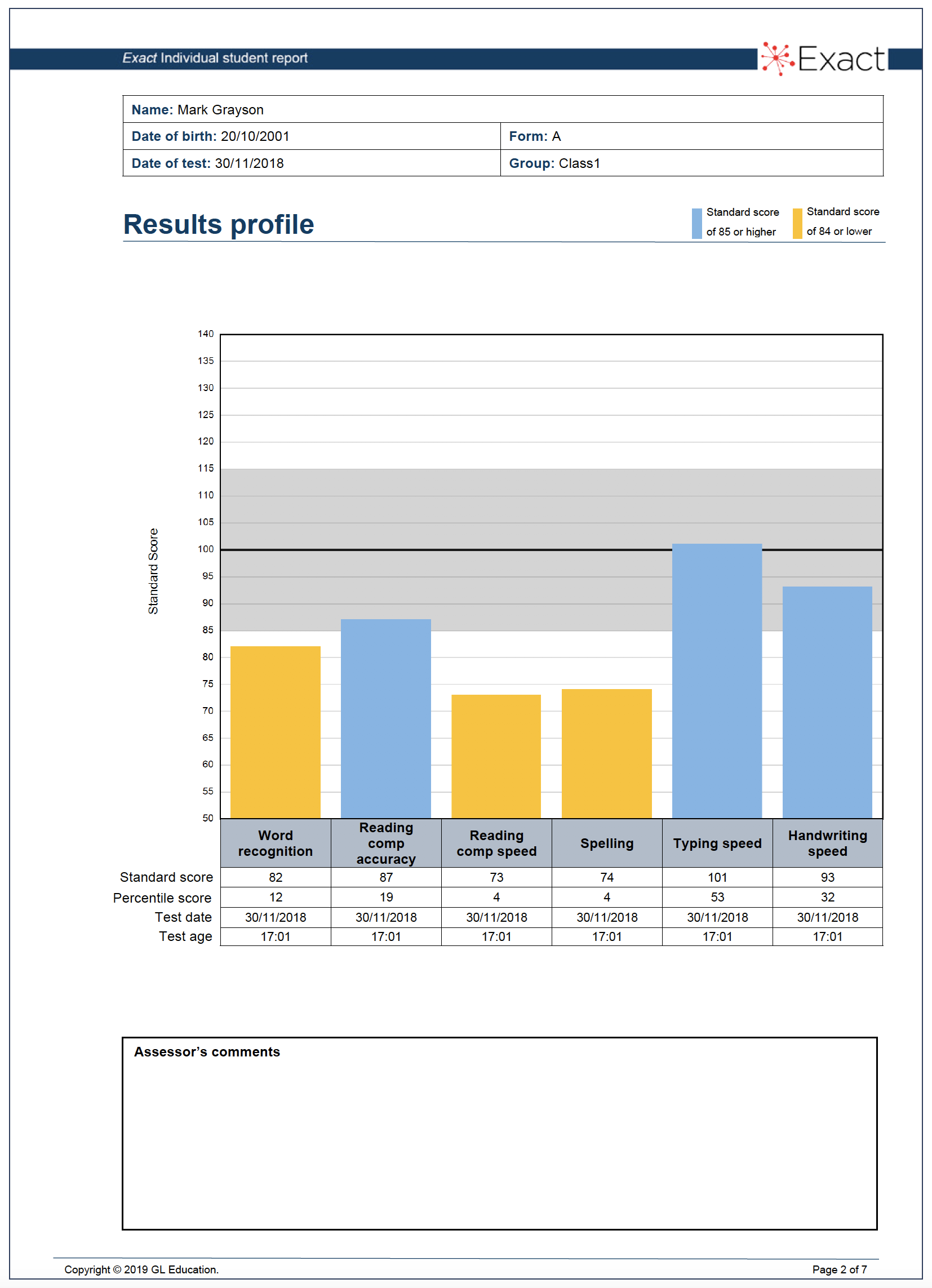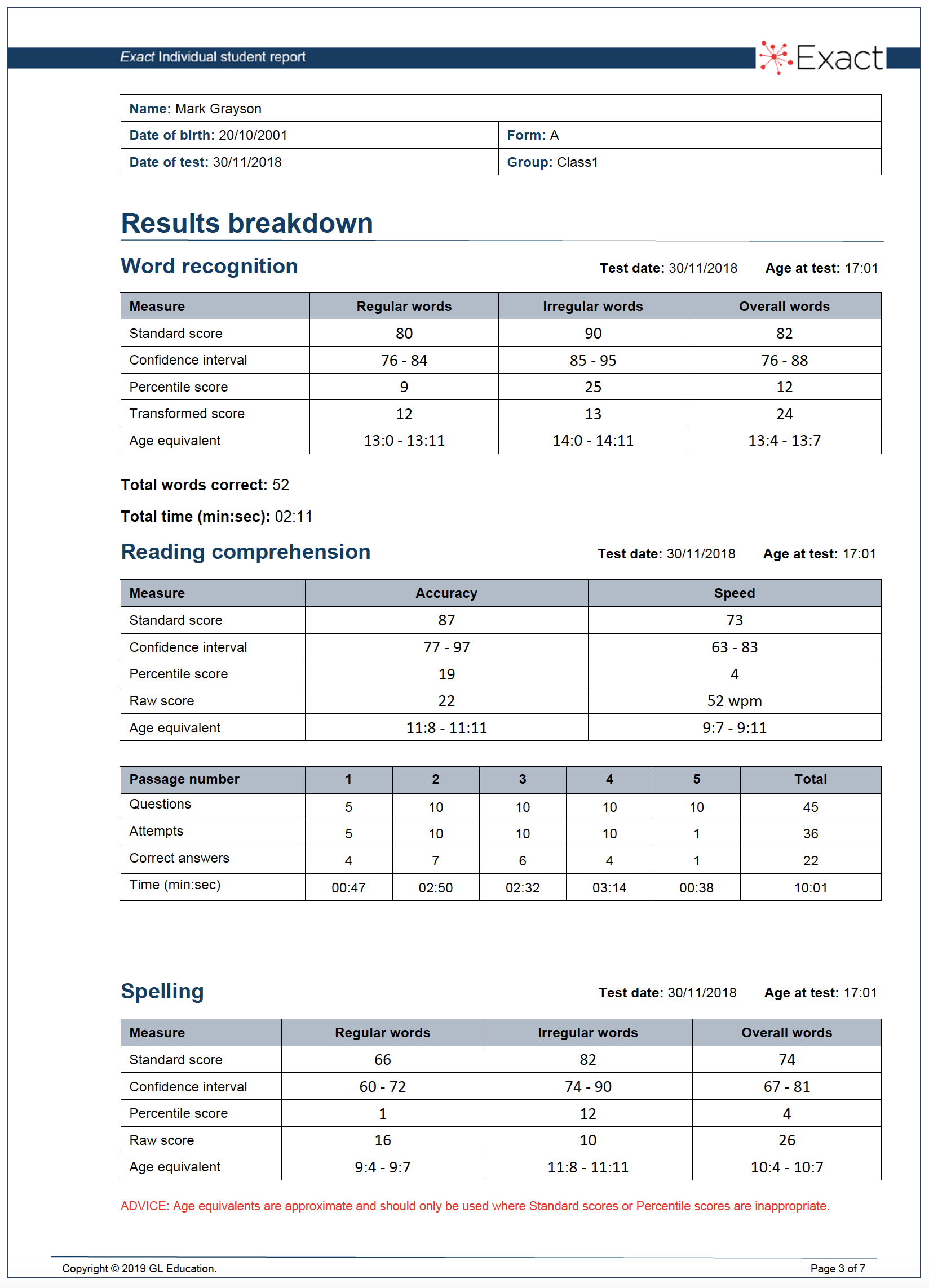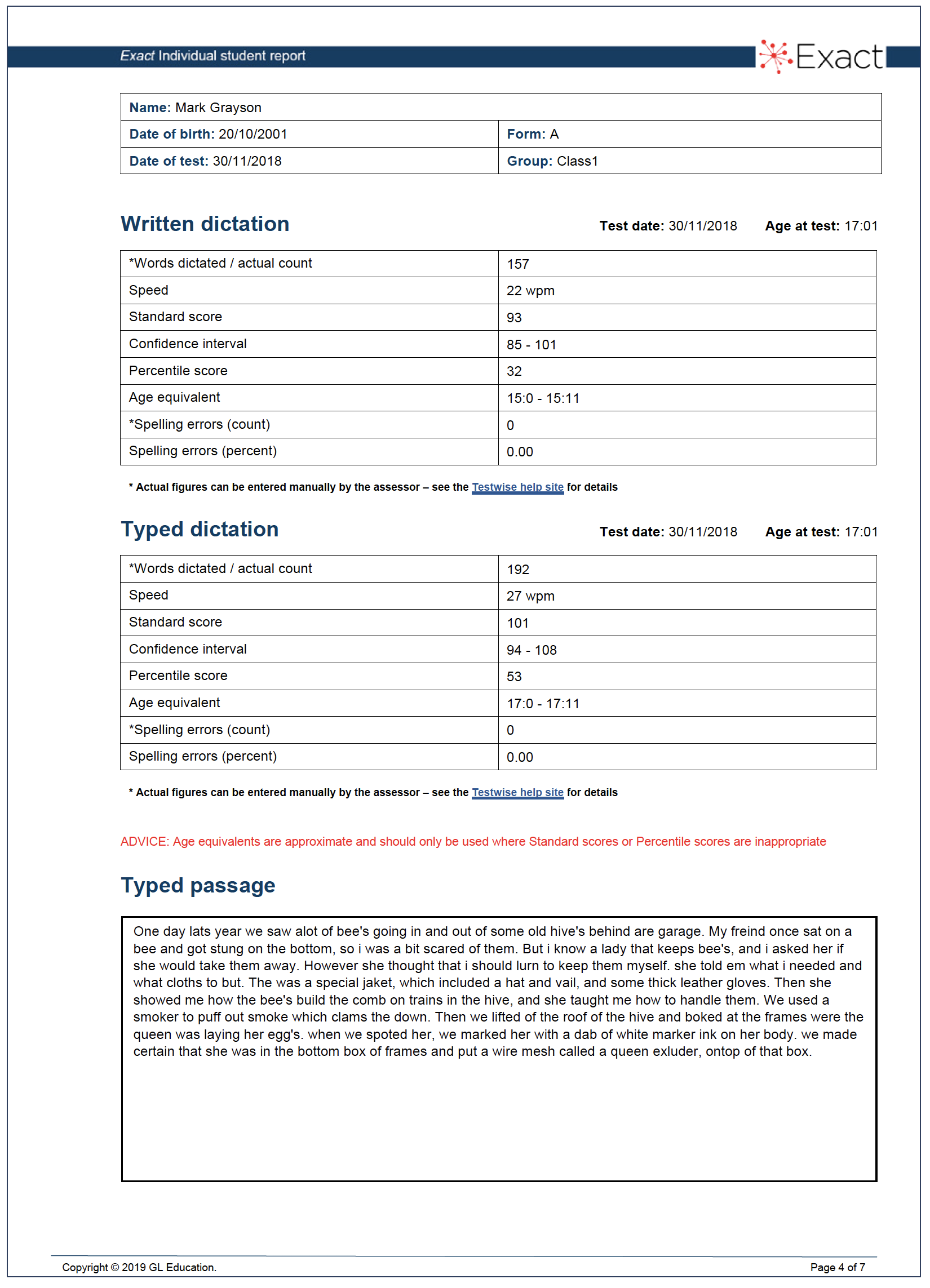Case A: A 17-year-old with dyslexia
Results profile
Figure 6 shows the typical profile of a dyslexic who has become a fairly competent but slow reader. He still has spelling problems, but the reading comprehension tests show that his reading accuracy is in the normal range, although he reads slowly. His typing and handwriting speeds are both within the normal range.
Results breakdown
See Figure 7. The breakdown of his reading comprehension scores (‘correct answers’ and ‘time’) show that he used the full 10 minutes of the test appropriately but struggled to comprehend the more complex language in passage 4, so that he had only just started passage 5 by the end of the test.
However, if we look at the typed passage, we see a number of typically dyslexic spelling errors (‘are’ for ‘our’ – a homophone; ‘freind’ for ‘friend’ – right letters in an irregular word, but in the wrong order; ‘lurn’ for ‘learn’ – a phonetic spelling).
Conclusion
On the grounds of his spelling and reading comprehension speed, he should be entitled to extra time in examinations.
His competent typing would also suggest that he should use a keyboard for as much of his coursework as possible. He will only be eligible to use a keyboard in exams if it is his usual method of working in school. Note, however, that permission to use a word processor does not grant permission to use a spell checker.
If he has not already been assessed for dyslexia, use of LADS Plus would be helpful in this regard (see Section 3.3.2).

Figure 6. Results profile for Case A

Figure 7. Results breakdown for Case A


